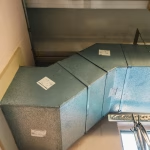If you operate equipment with hydraulics you probably have components like hydraulic cylinders, reservoirs, fittings, hoses and other items. In order to properly maintain a hydraulic system, it’s best to have a basic understanding of how it works and know the difference between an open and closed system. Here is some basic information to help get you started.
What is Hydraulics?
The word hydraulics comes from “hydro” which means water and hydraulics is all about the power of fluids. For example, when fluid becomes compressed, it is capable of releasing a great deal of the energy from the compression. Hydraulics works by applying pressure to fluid with a pump and piston and maintaining the pressure within a sealed system.
If you know the basics of an internal combustion engine you already have a rudimentary understanding of how hydraulic cylinders work. A cylinder contains a piston (with seals) within a round tube like structure, and as pressurized fluid enters the cylinder, it forces the piston in the opposite direction. This power is used to perform a wide range of functions including steering, excavating and lifting.
Open and Closed Hydraulic Systems
In a closed configuration, the pump is allowed to force fluid through a hydraulic system. Fluid flows out the pump exhaust port and then back to the intake port. When the system is a neutral operating position, a valve blocks oil from the pump and allows it to flow to an accumulator. A typical closed loop system can be used for turning a motor which rotates a hoist drum for lifting a heavy load. Many kinds of construction equipment and farm machinery use closed systems.
With open loop hydraulic systems, the pump is always working. When the system is in neutral, a valve directs all fluid back to the fluid reservoir, effectively bypassing the hydraulic pump. This reduces pump pressure and limits wear and tear. Open systems are used on older equipment and log splitter applications.
Terms to Remember
Hydraulic cylinders and systems may have several components and features, such as:
* Fittings – connect hoses to components
* Pumps
* Seals
* Pistons
* Rods
* GPM – denotes a pump’s capacity as gallons per minute.
* Stroke – length of a piston’s movement
* Bore – size of the cylinder’s internal displacement, usually expressed in cubic centimeters.
This is considered only basic info for hydraulic cylinders and other components of hydraulic systems. A trusted manufacturer can explain everything you need to know and provide professional assistance and advice on choosing the right parts for your business. Visit the website for more details.






